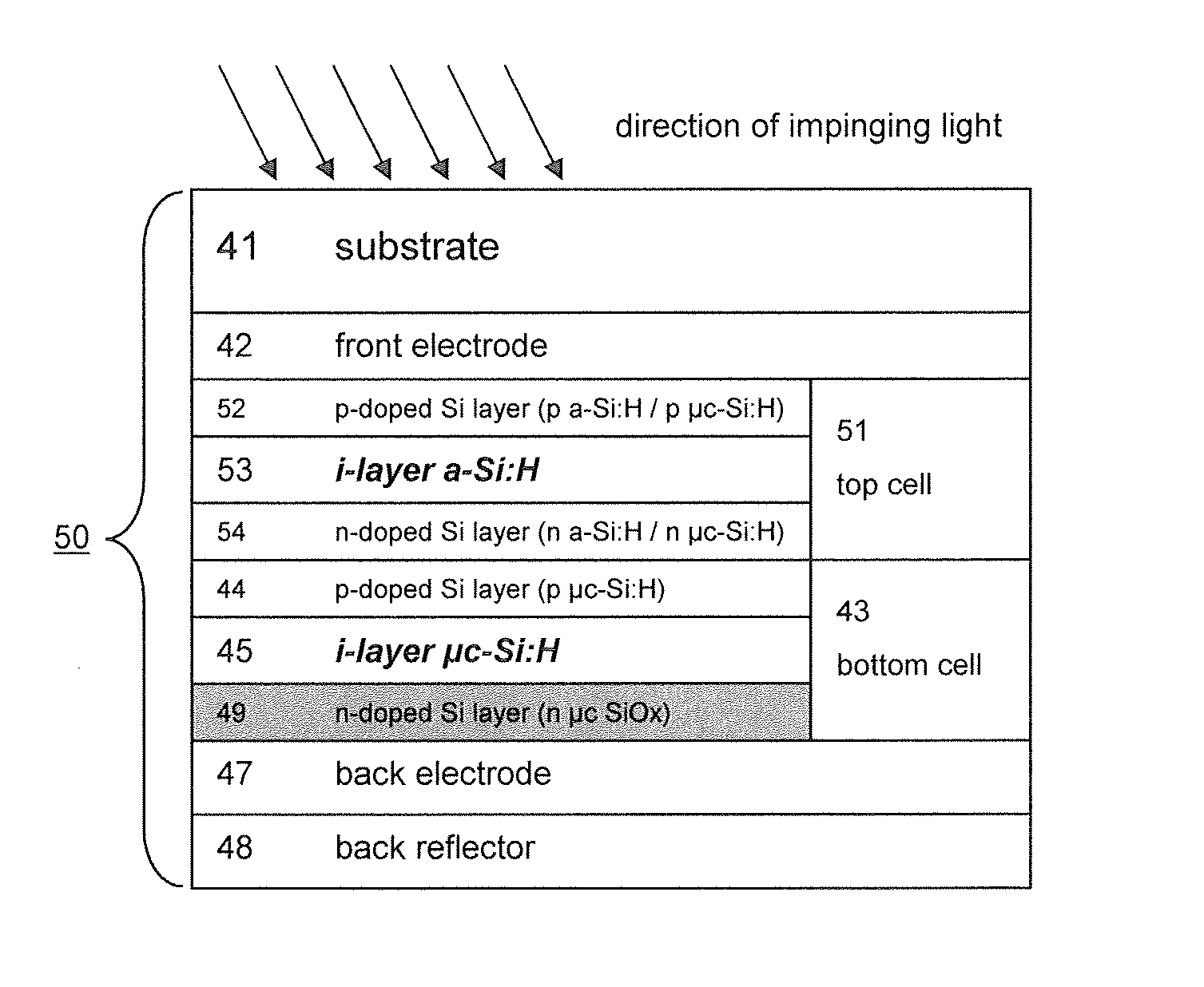SiOx n-LAYER FOR MICROCRYSTALLINE PIN JUNCTION
a microcrystalline pin and n-layer technology, applied in the direction of photovoltaic energy generation, basic electric elements, electrical apparatus, etc., can solve the problems of low deposition rate, long deposition time, loss of light in the cell, etc., to reduce production time and cost, simplify the structure, and simplify production
- Summary
- Abstract
- Description
- Claims
- Application Information
AI Technical Summary
Benefits of technology
Problems solved by technology
Method used
Image
Examples
Embodiment Construction
[0030]It was found that both requirements for the n-layer such as high transmission in the long wavelength part of the spectra as well as a contribution to back reflection of light into the absorber layer before reaching the back contact in combination with sufficiently good electrical behavior can be achieved even without a second contact layer. It could be shown that it is possible to obtain this by applying a single SiOx n-type layer 49 (FIG. 2) in place of the conventional n-doped silicon layer 46 of prior art (FIG. 1), when the properties of such a layer are optimized in an appropriate range in combination with an appropriate n-layer / back contact interface. The optimization can be realized by[0031]a) Choosing the oxygen content of such an inventive SiOx layer in a range that the refractive index n at a wavelength of the light of 500 nm is in not smaller than 2.0.[0032]b) Increasing the doping of said inventive SiOx layer by a sufficiently high dopant gas flow to achieve a reaso...
PUM
 Login to View More
Login to View More Abstract
Description
Claims
Application Information
 Login to View More
Login to View More - R&D
- Intellectual Property
- Life Sciences
- Materials
- Tech Scout
- Unparalleled Data Quality
- Higher Quality Content
- 60% Fewer Hallucinations
Browse by: Latest US Patents, China's latest patents, Technical Efficacy Thesaurus, Application Domain, Technology Topic, Popular Technical Reports.
© 2025 PatSnap. All rights reserved.Legal|Privacy policy|Modern Slavery Act Transparency Statement|Sitemap|About US| Contact US: help@patsnap.com


